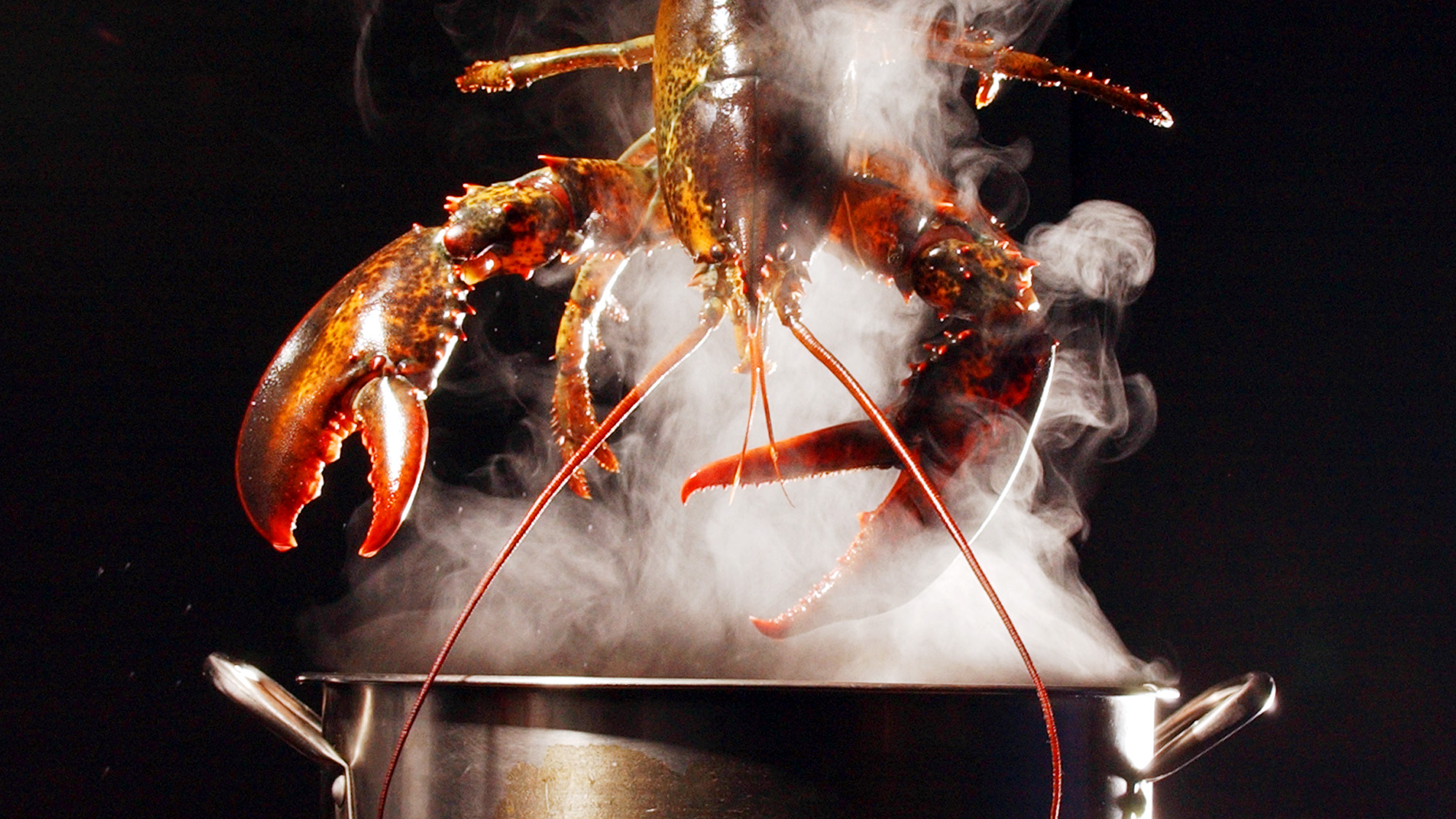Whenever you enter a restaurant, you’re putting your health in someone else’s hands. Thousands of people get sick from food poisoning each year. But thankfully chefs can take steps to minimize the risk. One of those ways? Boiling lobsters alive. Turns out, those unusual tanks of live lobsters in restaurants isn’t just there so you can have a plate of fresh lobster. Following is a transcript of the video.
If you walked into a kitchen and saw a pig cooked alive on the stove, you’d probably be horrified and lose your appetite. Yet, this is how millions of lobsters meet their fate in American kitchens each year. Some people even relish choosing which lobster’s time is up at restaurants or markets across the country. But is a lobster really any different from other animals we eat? Why do we boil lobsters alive? And why do places even sell live lobsters? Turns out, this seemingly barbaric way of cooking lobsters could actually save your life.
Humans were boiling lobsters alive thousands of years ago. The first recorded case came from recipes attributed to the famous Roman Cook Caelius Apicius in the first century. American chefs later adopted the process by 1880, when they discovered that the dish looks and tastes better when the animal is boiled alive. It wasn’t until later that we realized this also reduces the risk of severe food poisoning. That’s all because of these little guys. They’re a type of Vibrio bacteria. And they thrive on the decaying flesh of lobsters and other shellfish. If a lobster dies, you only have a few hours before these bacteria show up to the party. And once they’re in, it’s nearly impossible to get rid of them. Even cooking the lobster meat won’t kill all of the bacteria. So it’s safer to just keep the animal alive right up until you serve it.
If Vibrio bacteria end up in your system, it’s not pretty. You can experience abdominal cramping, nausea, vomiting, fever, chills, and sometimes even death. Luckily, there’s a pretty good way to tell if that meat has gone bad. Just smell it. You can easily smell the ammonia that is released when the body starts to decompose.
So boiling lobsters alive save us from a world of pain, but what about the lobsters? For starters, lobsters don't scream when you boil them. In fact, they lack lungs and don't even have the proper biological equipment to form a scream. What you hear is air and steam escaping from the shells of their simmering suppers. In any case - we don't do this to chickens or pigs because it's pretty obvious that they can feel pain. For lobsters, it's less clear if their primitive nervous systems and brains even know what pain is. When a lobster thrashes around in the pot does that mean it's in agony? Or is it simply a reflex response to the boiling water, but not a conscious action? No one really knows, so more research is needed.
Regardless, some say this uncertainty is exactly why we should think twice.
Anil Seth: With lobsters, we just don't know if they can feel pain. There's a thing in ethics that we call the Precautionary Principle, when not knowing we should err on the side of caution. If there is the potential for something to have the ability to suffer, we should treat that possibility very seriously. So boiling lobsters, not a very good idea.
New Zealand and Switzerland certainly agree. They've gone so far as to make it illegal to boil lobsters alive. Should America follow suit?
